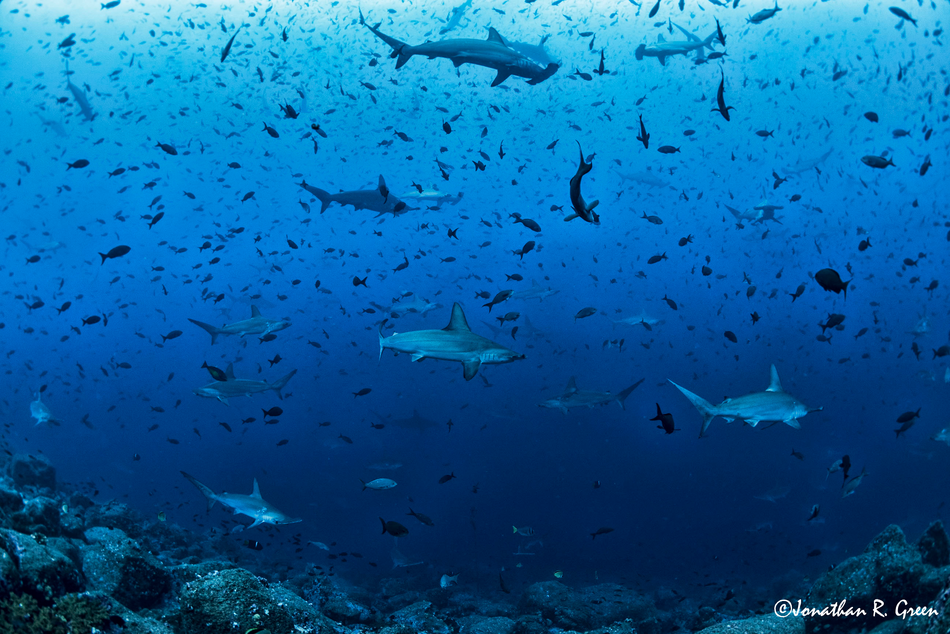
Learn about the natural changes in water visibility that take place seasonally in the Galapagos Islands
Jenny Waack (founder of Galapagos Shark Diving®) and Jonathan Green (Tour Leader of Galapagos Shark Diving® and Director of Galapagos Whale Shark Project) discuss the natural changes in water visibility that take place seasonally. The information in this post was extracted from a Travel EmOcean podcast episode recorded on June 14, 2020. Click here to listen to the full episode.

When is the productivity in the water highest and how does that affect the amount of wildlife that you can see?
As discussed in our previous blog post, during the beginning of the cool season, which generally starts in June, there is a change in ocean currents. There are cold currents that are coming up the Peru Coast all the way from Antarctica, bringing in very cold and nutrient-rich water, which is highly productive. When that mixes with the warm waters from the north, you get an explosion in marine life at a very low level - we're talking about phytoplankton and zooplankton. Because of the levels of productivity in the water and the amount of food that is available, you get an influx of the bigger species. So a lot of the sharks, the adult whale sharks, giant mantas, turtles, rays, a number of the whale species and so much more come into the islands around those periods.

In the colder season, the productivity in the water is higher. Does that mean the visibility is less compared to the warmer season?
Yes, that's absolutely true. And that's one of the things you have to take into account. The warmer season tends to give you better visibility because the water is clearer due to fewer nutrients. But because there are fewer nutrients in the water, therefore lower productivity, means less wildlife and fewer big schools of sharks. A lot of the big life is absent. So yeah, you've got to weigh it up. If those are the months that you have to go, there are pros and cons for each time of the year.

Visibility is relative. How much is the visibility in numbers in the cold season?
Again, it's all relative. So if you've only dived in places like the Caribbean or the Red Sea, where you tend to have 20 - 30 meters, what is 80 to 100ft of visibility, then you might be disappointed in Galapagos in certain areas during the cold season. Frequently during the cold season, you can get visibility 15 – 20 meters (50 - 65 feet). If you get very nutrient rich waters and all of a sudden the plankton blooms, then you could have visibility, which is 5 - 10 meters (16 – 32 feet). It's a question the different currents and it is part of the experience. But again, I have to emphasize that if you want to increase your probability and your chances of seeing those big five, then it's the cold season.
In summary, the productivity of the water is higher in the cool season (June - October) which means bigger species of marine wildlife but increased productivity means less visibility. During the warm season (November - May) the productivity of the water is lower so you may see less wildlife but the visibility is better. It's important to weigh out the pros and cons for each time of the year.









Write a comment